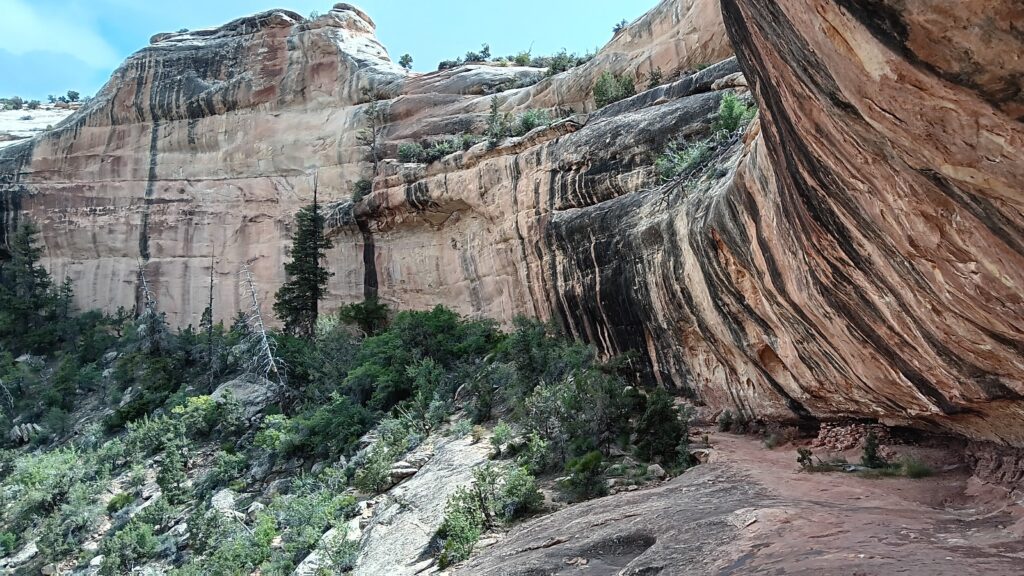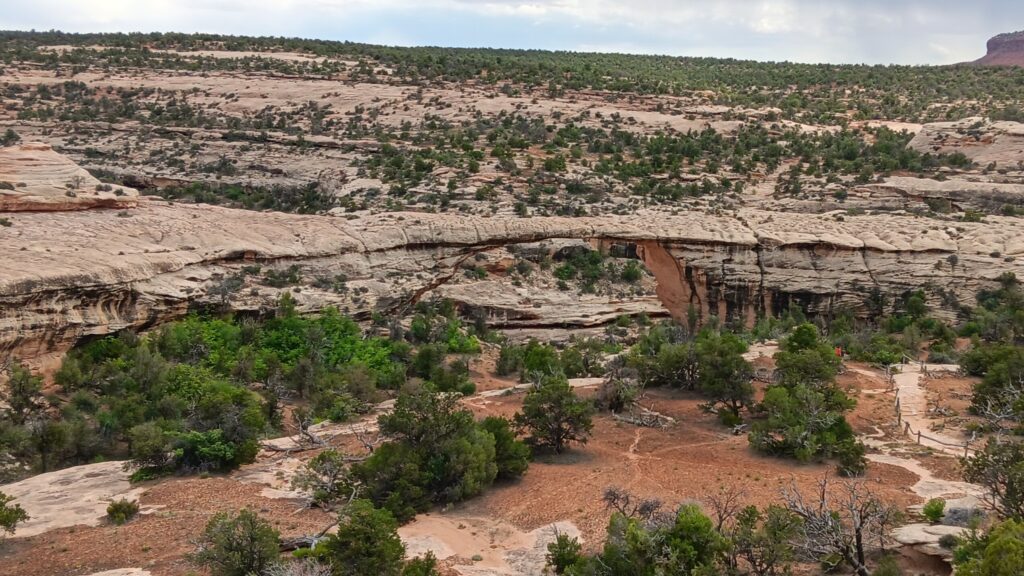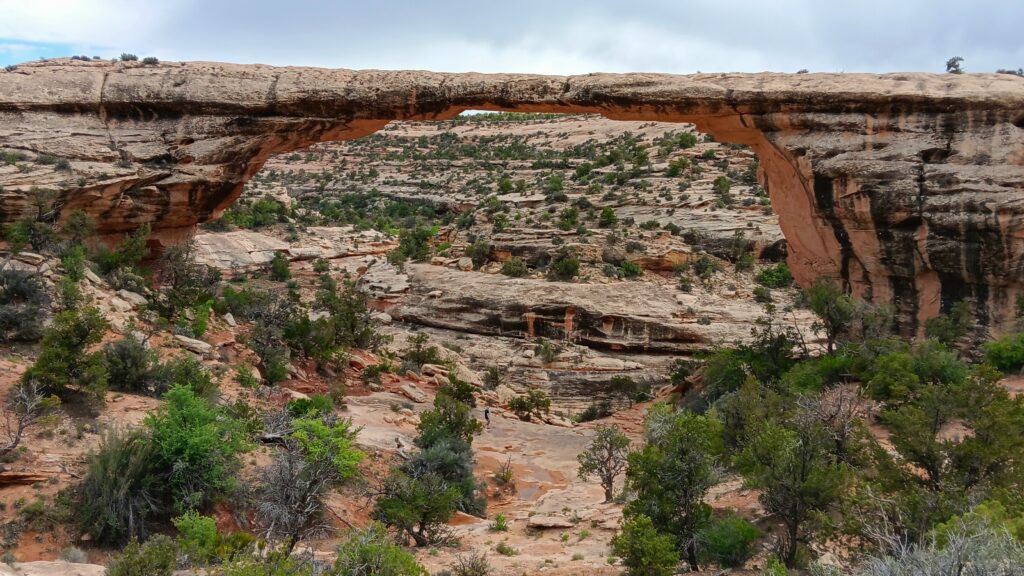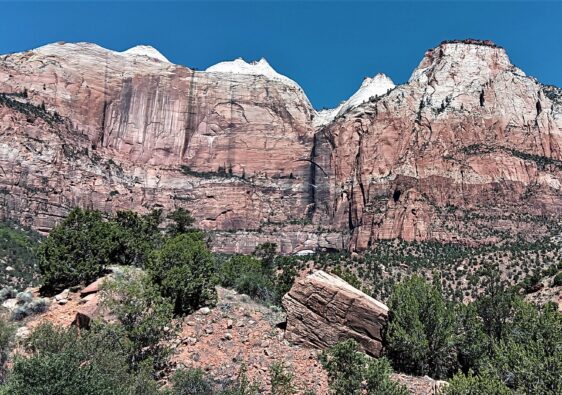

The Natural Bridges National Monument is Utah’s first national monument. There are three Natural Bridges, “Sipapu,” “Kachina”, and “Owachomo”. The bridge names were chosen to honor the Indian tribes that lived in this area during prehistoric times. The park has a loop road with access to all three bridges, and trails descend to each one.
The first bridge on the route was Sipapu Bridge. Sipapu means “the place of emergence,”. Hopi believe that their ancestors came into this world via a place of emergence.
Our first view was from a bit of a distance, but if you look closely you can see the bridge in the picture below. We then descended the trail, following it about halfway down to get a better view. The trail involved a couple of ladders and traveled along a cliff wall for a bit. Some people went all the way down, but we wanted to see the other bridges and Steve was still nursing his knee.






Kachina Bridge got it’s name from rock art on the bridge that is similar to symbols that the Hopi kachina spirits displayed on their bodies. This trail was a long one and we did not descend it so our view was a bit obscured.


The third bridge is the Owachomo Bridge, which means Rock Mound. This bridge is believed to be the oldest one in the park. It is the most photographed bridge in the park because of it’s accessibility. We hiked part of the way down this trail as well to get a closer look.




In addition to the three natural bridges, there were also several other pullouts along the road where you could see how the river carved out the canyon walls leaving behind intricate formations.


If you find yourself traveling along Utah’s Route 95, the Natural Bridges National Moment should be one of your stop.




